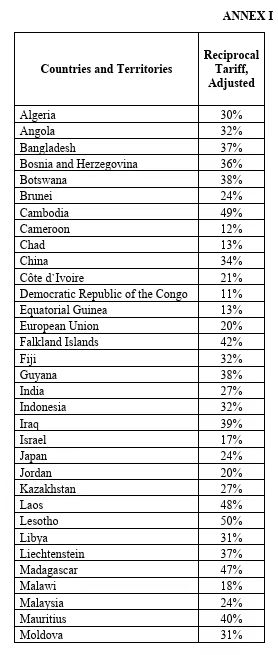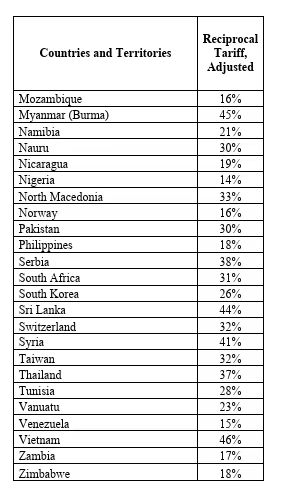The United States has implemented a new tariff policy that imposes a 10% minimum surcharge on imports from all countries. However, in a significant escalation of trade tensions, the U.S. has introduced a 34% reciprocal tariff on Chinese goods, which is applied on top of existing tariffs. This policy aims to counterbalance what the U.S. perceives as unfair trade practices by China, making Chinese exports to the U.S. significantly more expensive.
China-U.S. Tariffs and the Concept of Reciprocity
The U.S. government justifies the increased tariffs under the principle of reciprocal tariffs, ensuring that countries charging higher tariffs on U.S. exports face similar barriers when exporting to the United States. The 34% tariff increase on Chinese goods is part of this broader effort to enforce trade fairness, further straining China-U.S. economic relations.
Vietnam to U.S. Tariffs and Supply Chain Shifts
Many businesses have attempted to bypass rising tariffs on Chinese goods by shifting manufacturing to Vietnam. However, Vietnamese exports to the U.S. are still subject to tariffs, though they remain lower compared to those imposed on China. This shift reflects a broader trend in global trade where businesses seek alternative production hubs to avoid high tariffs.
Latest U.S. Tariffs on Chinese Goods
China now faces multiple tariff layers when exporting to the U.S. With the new policy in place, the additional 34% tariff is levied on top of pre-existing duties, significantly increasing costs for Chinese manufacturers and U.S. importers. This aggressive stance further escalates trade tensions and incentivizes businesses to explore other markets or production locations.
U.S. Tariffs on Other Countries
The latest tariff policy also establishes a 10% baseline tariff on imports from all countries. However, tariff rates vary depending on the rates charged by those countries on U.S. exports. The table below, derived from the latest U.S. Reciprocal Tariffs Report, illustrates the new tariff rates applied by the U.S.:

This approach seeks to create a fairer trade environment by ensuring that countries charging high tariffs on U.S. goods receive proportionate tariff treatment in return.
Implications for Global Trade
The U.S.’s decision to implement a universal 10% tariff increase, coupled with higher tariffs on specific countries like China, signals a shift toward stronger protectionist policies. While this move aims to strengthen domestic industries, it also risks further trade disputes and supply chain disruptions.
With China facing the steepest tariffs, businesses are increasingly looking to diversify supply chains, turning to countries like Vietnam, Mexico, and other Southeast Asian nations. The long-term impact of these tariffs will depend on how affected countries respond and whether future trade negotiations can lead to tariff reductions.


Conclusion
The China-U.S. tariff war continues to evolve, with reciprocal tariffs shaping the trade landscape. As of now, China faces an additional 34% tariff on exports to the U.S., while other nations are subject to a minimum 10% tariff based on their existing trade barriers against the U.S. As companies adapt to these new policies, the global trade environment remains in flux, and businesses must stay informed to make strategic trade and supply chain decisions.
www.usllglobal.com
Magdong Logistics Group Ltd.
